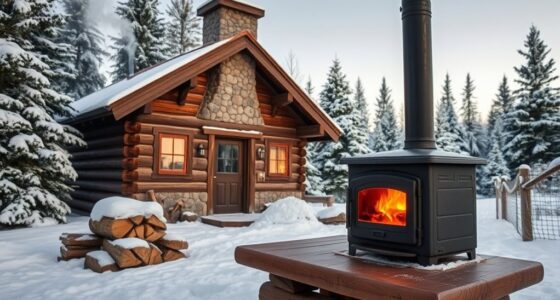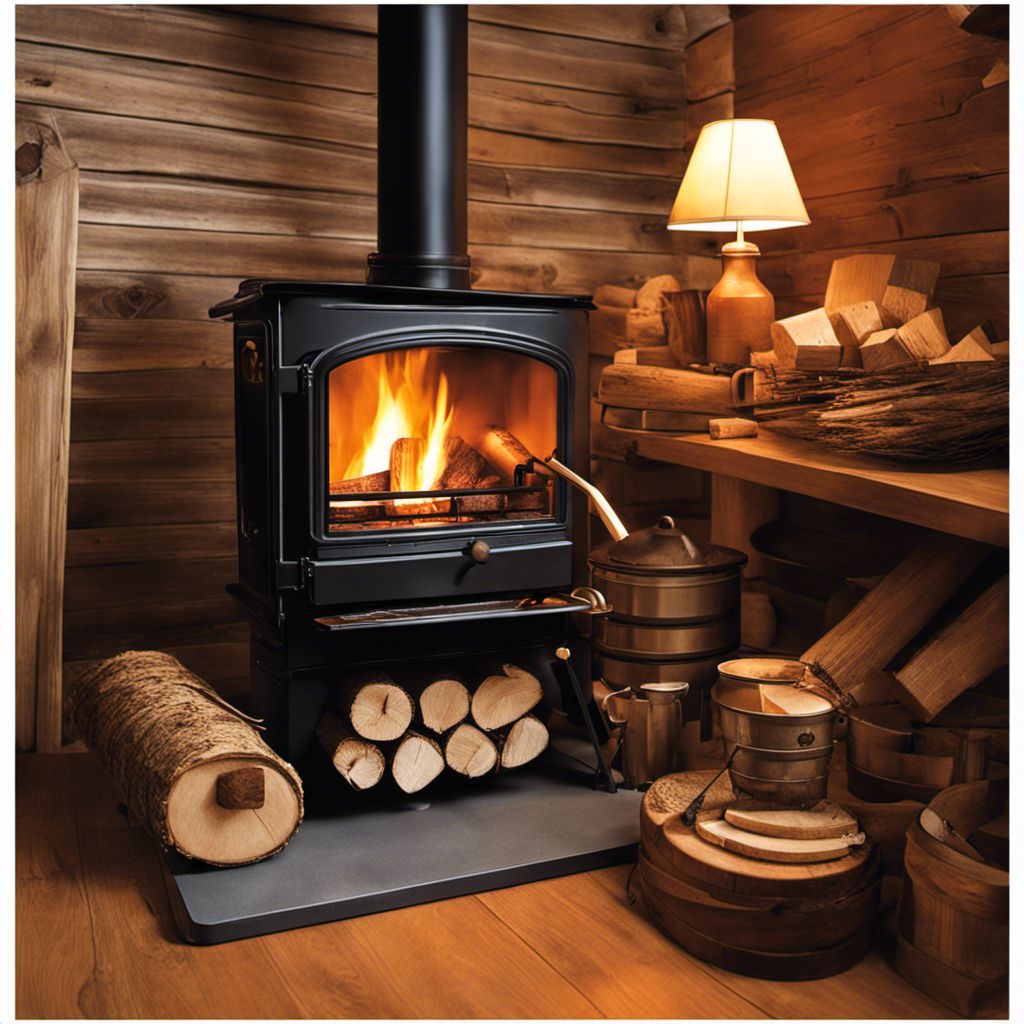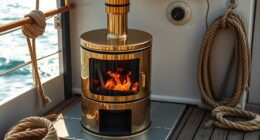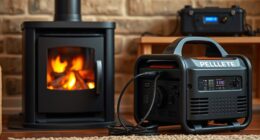
As a homeowner with a wood stove, discovering that my wood stove pipe was releasing smoke raised concerns for me. Did you know that approximately 70% of wood stove owners encounter this issue at some point?
It’s important to address this problem promptly, as smoking wood stove pipes can be indicative of underlying issues such as damaged ventilation or improper burning techniques. In this article, I will explore the common causes of smoking wood stove pipes and provide solutions to help you resolve this issue.
Key Takeaways
- Creosote buildup and improper ventilation are common causes of smoking wood stove pipes.
- Regular cleaning and maintenance of the stove pipe and chimney can prevent creosote buildup and address ventilation issues.
- Burning wet wood and using excessive accelerants can lead to more smoke production and increased risk of chimney fires.
- Installing a chimney cap, using properly seasoned firewood, and consulting a professional chimney sweep can help resolve smoke issues.
Common Causes of Smoking Wood Stove Pipes
I’ve noticed that some common causes of smoking wood stove pipes are creosote buildup and improper ventilation.
Creosote is a byproduct of burning wood, and over time, it can accumulate on the walls of the stove pipe. This buildup restricts airflow and can cause smoke to back up into the living space. Regular cleaning of the stove pipe can help prevent creosote buildup and ensure proper ventilation.
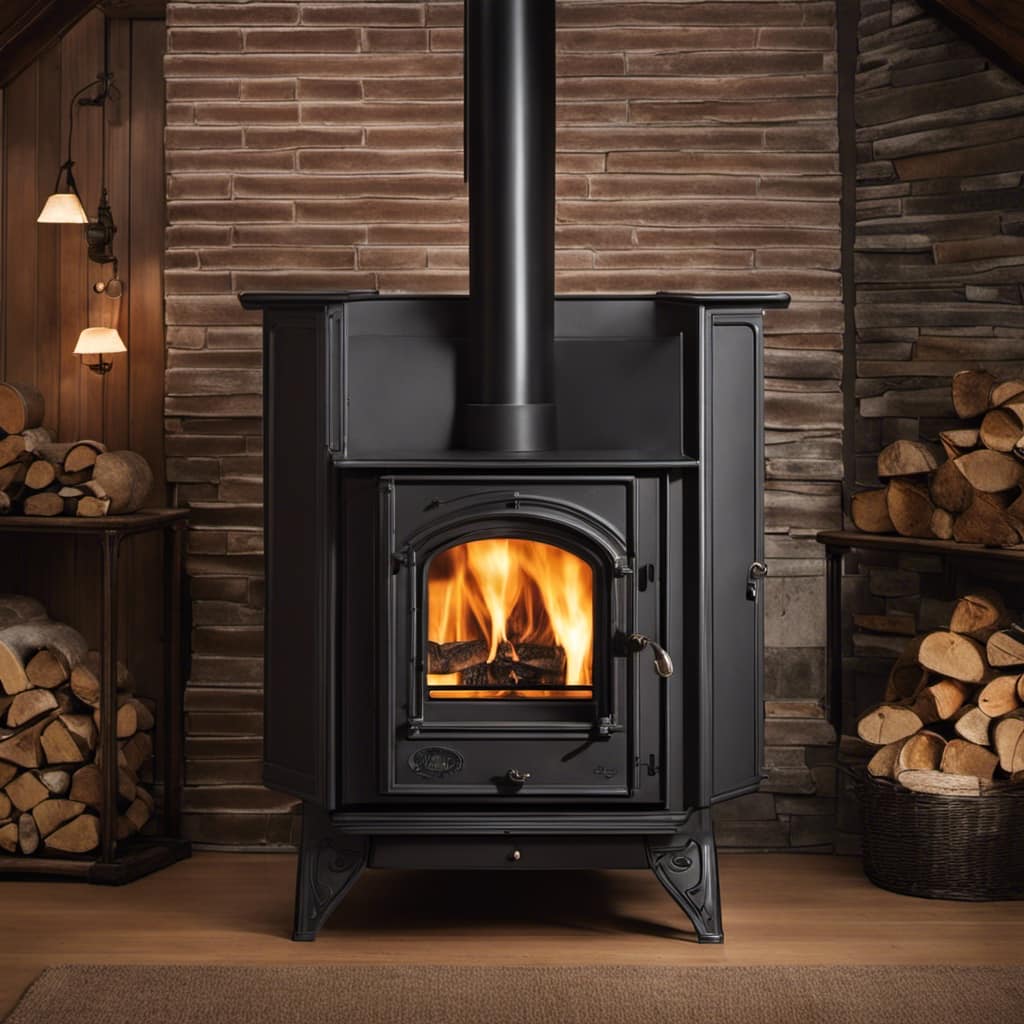
Another common cause of smoking wood stove pipes is improper ventilation. If the stove pipe isn’t properly installed or if there are obstructions in the flue, it can lead to poor draft and smoke leakage. Preventive maintenance, such as regular inspection and cleaning of the stove pipe, can help identify and address ventilation issues.
It’s important to address smoking wood stove pipes promptly, not only for safety reasons but also for the environmental impact, as smoke emissions can contribute to air pollution.
Damaged or Inadequate Chimney Ventilation
My neighbor’s chimney has a damaged vent, so I told him to get it fixed as soon as possible. Proper chimney maintenance is crucial for the efficient operation of a wood stove or fireplace.
One of the key aspects of maintenance is ensuring adequate ventilation. Without proper ventilation, smoke can accumulate inside the chimney and eventually enter the living space, causing discomfort and potential health risks. Regular ventilation inspection is necessary to identify any issues and address them promptly.
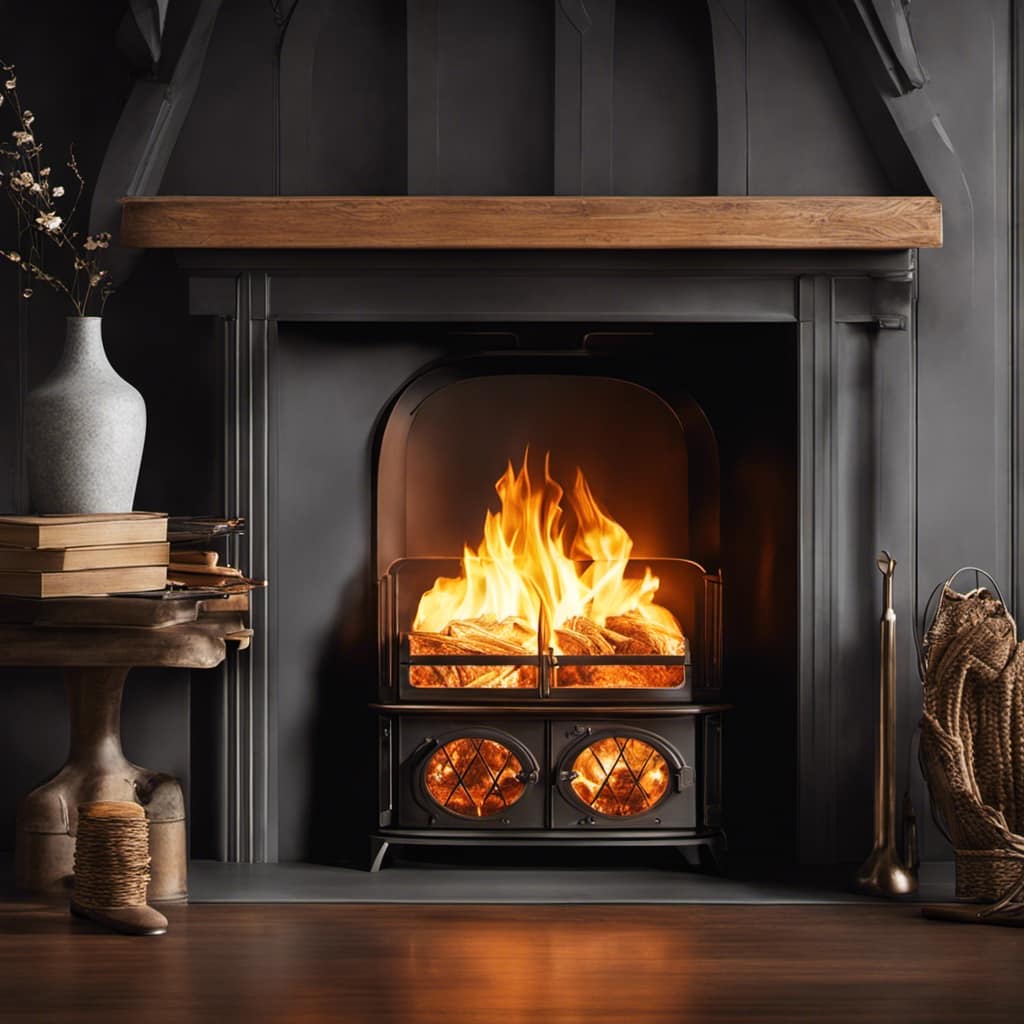
Damaged or inadequate chimney ventilation can be caused by various factors such as blockages, creosote buildup, or structural damage. These issues can be resolved through professional chimney repair and maintenance services, which include cleaning, inspections, and necessary repairs.
It’s essential to prioritize chimney maintenance and ventilation inspections to ensure the safe and efficient use of wood-burning appliances.
Improper Wood Burning Techniques
Using too much accelerant and burning wet wood can lead to excessive smoke and a higher risk of chimney fires. When it comes to burning techniques and wood stove maintenance, it’s important to follow proper guidelines to ensure safety and efficiency.
Here are some key points to keep in mind:

-
Use dry, seasoned wood: Wet wood not only produces more smoke but also reduces the heat output and creates a buildup of creosote in the chimney.
-
Avoid accelerants: Using excessive accelerants can result in a sudden burst of flames, leading to a higher risk of chimney fires.
-
Maintain proper airflow: Ensure that the air vents and dampers are open to allow for efficient combustion and reduce smoke production.
-
Clean the chimney regularly: Regular chimney cleaning helps prevent excessive creosote buildup, which can ignite and cause chimney fires.

-
Consult a professional: If you’re unsure about proper burning techniques or need assistance with wood stove maintenance, it’s always best to consult a professional for guidance.
By following these burning techniques and maintaining your wood stove properly, you can minimize smoke production and reduce the risk of chimney fires.
Now let’s discuss the issue of excessive creosote buildup.
Excessive Creosote Buildup
I have noticed a significant increase in the amount of creosote buildup in my chimney, and it’s causing me concern. Creosote is a black, tar-like substance that forms when wood or fossil fuels are burned. It can accumulate on the walls of the chimney and pose a serious fire hazard if not removed regularly.

Creosote removal is essential to maintain the safety and efficiency of your chimney. One effective method is chimney cleaning, which involves using special tools to scrape and brush away the creosote deposits. It’s recommended to have your chimney cleaned at least once a year, or more frequently if you use your fireplace or wood stove frequently.
Regular chimney cleaning not only reduces the risk of chimney fires but also improves the air quality in your home.
Finding Solutions to Stop Wood Stove Pipe Smoking
I found a solution to stop my wood stove pipe from smoking by installing a chimney cap. This simple addition to my chimney has made a significant difference in resolving the smoke issues I was facing.
Here are some key points to consider when troubleshooting smoke issues and understanding the importance of regular chimney maintenance:

-
The chimney cap prevents downdrafts and helps create proper airflow, reducing the likelihood of smoke entering your home.
-
Regularly cleaning and inspecting your chimney can help identify any blockages or creosote buildup, which can contribute to smoking issues.
-
Properly seasoned firewood is crucial to minimizing smoke production and improving combustion efficiency.
-
Adjusting the damper and ensuring proper ventilation can help regulate the airflow and reduce smoke.
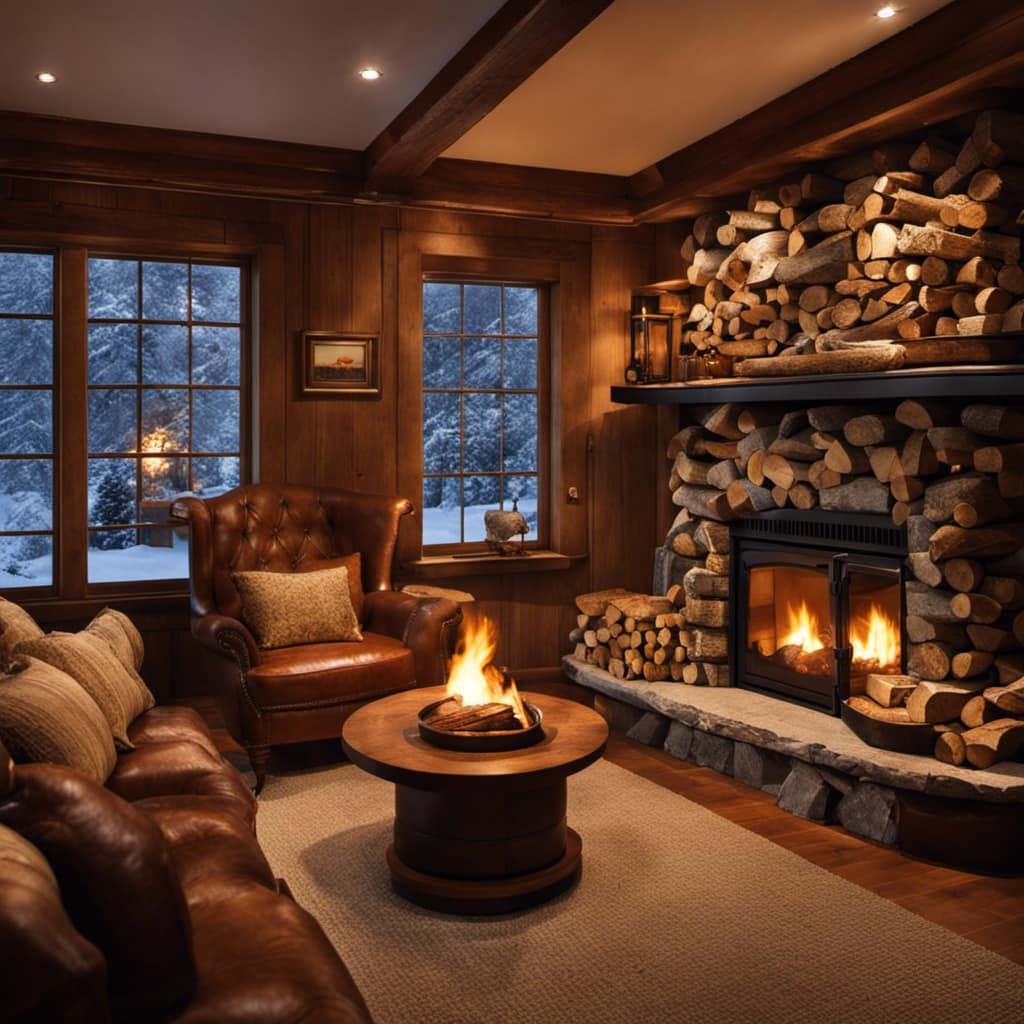
-
Consulting with a professional chimney sweep can provide valuable insights and recommendations for resolving smoke issues.
Frequently Asked Questions
Can Smoking Wood Stove Pipes Be Caused by Using a Specific Type of Wood?
Using a specific type of wood can indeed affect wood stove performance, including causing smoking in the stove pipe. Certain woods, like pine or wet wood, can produce more smoke and creosote buildup, leading to smoking issues.
How Often Should I Clean My Wood Stove Pipe to Prevent Smoking?
I clean my wood stove pipe every 6-12 months to prevent smoking. Signs of a dirty pipe include a buildup of creosote, a strong odor, and reduced airflow. Regular maintenance is crucial for efficient and safe operation.
Can Smoking Wood Stove Pipes Be a Sign of a Bigger Problem With My Chimney?
Smoking wood stove pipes can indicate a larger issue with the chimney. It’s crucial to have regular chimney inspections to identify potential problems and ensure that the wood stove installation is done correctly.

Are There Any Specific Weather Conditions That Can Cause Wood Stove Pipe Smoking?
Weather conditions like high winds or low atmospheric pressure can cause wood stove pipe smoking. To troubleshoot, check for a clogged chimney or improper draft. Ensure the stove is properly installed and vented.
Can Smoking Wood Stove Pipes Affect the Air Quality Inside My Home?
Smoking wood stove pipes can negatively impact indoor air quality. Regular wood stove pipe maintenance is crucial to reduce health risks associated with indoor wood burning. It’s important to prioritize the health and safety of your home.
Conclusion
In conclusion, when faced with smoking wood stove pipes, it’s crucial to address the underlying causes to ensure a safe and efficient operation.
By repairing damaged chimneys, adopting proper wood burning techniques, and regularly cleaning creosote buildup, one can extinguish the smoky haze and let the warmth of the wood stove dance freely.

Remember, like a skilled conductor, maintaining a harmonious connection between your wood stove and chimney will orchestrate a smoke-free sanctuary in your home.
Growing up surrounded by the vast beauty of nature, Sierra was always drawn to the call of the wild. While others sought the comfort of the familiar, she ventured out, embracing the unpredictable and finding stories in the heartbeat of nature.
At the epicenter of every remarkable venture lies a dynamic team—a fusion of diverse talents, visions, and passions. The essence of Best Small Wood Stoves is crafted and refined by such a trio: Sierra, Logan, and Terra. Their collective expertise has transformed the platform into a leading authority on small wood stoves, radiating warmth and knowledge in equal measure.




